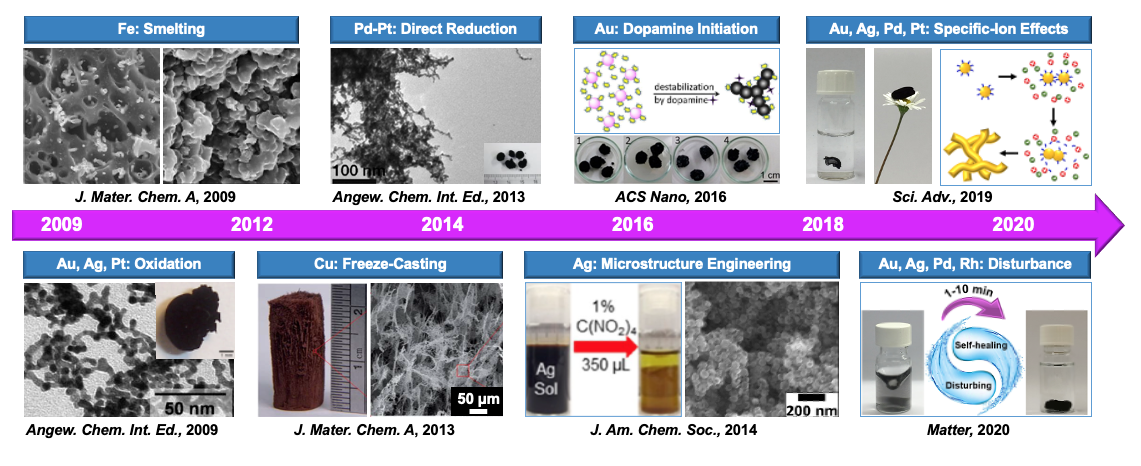Metal aerogels (MAs) are a new type of aerogels discovered in 2009. MAs enjoy wide prospect of applications in catalysis, sensing, energy conversion and storage, due to their unique integration of high conductivity, catalytic activity, unique plasmonic properties of metals with high porosity, large specific surface area and self-supported features of aerogels. Despite of active research in the past decade, this field is still in its infant stage due to the large challenge in controlled synthesis. Limited fabrication strategies and unclear formation mechanisms largely restrict the diversity of chemical composition and structure, which further constraint the characterization of their fundamental physicochemical properties and the exploration of practical applications. In collaboration with Tongji University and TU Dresden, Dr. Ran Du from Zhejiang Institute of Research and Innovation of the University of Hong Kong (HKU-ZIRI) have reviewed the development of MAs in the last decade. They systematically summarized the state-of-the-art progress in the controlled synthesis and potential applications of MAs, directing a roadmap for the further research of this field. The article has recently been published in Matter (see link below).

Figure 1 Roadmaps of metal aerogels in the last decade.
For controlled synthesis, manifold non-sol-gel methods are delineated, such as dealloying, templating, high temperature reduction, combustion, 3D printing, and so on. Then the sol-gel method is highlighted. On the one hand, the state-of-the-art gelation mechanisms are analyzed to promote on-target design. On the other hand, by comprehensively summarizing critical parameters during the sol-gel process, the methodology of “6D design” for metal aerogels is proposed. The control from six dimensions — precursors, initiators, reductants, ligands, solvents, and external fields — is clarified and respectively discussed, so as to direct the controlled synthesis of MAs from chemical compositions to multiscale structures.
In terms of applications, the use of MAs in the field of catalysis (e.g., non-electro-catalysis, electrocatalysis and photoelectrocatalysis), optics (e.g., surface-enhanced Raman scattering), sensing (e.g., electro- and biosensing), energy storage and conversion (e.g., capacitors and batteries), and water remediation are reviewed. The current development, future prospect and the corresponding design principles are summarized.
Finally, challenges and opportunities of the field of MAs are summarized. From the synthesis aspect, issues including limited structure/composition diversity and ambiguous gelation mechanisms are highly challenging and needed to be solved. From the application aspect, the structure-performance correlations are unclear, disruptive applications are lacking, and the application territory is narrow. In summary, as emerging promising materials, metal aerogels are less developed. The current research is far from satisfactory, and participation of researchers of diverse background are highly desired so as to release the full potential of metal aerogels. Relevant research activities have been initiated at HKU-ZIRI.
Link:
Jiang, X.; Du, R.*; Hübner, R.; Hu, Y.; Eychmüller, A., A Roadmap for 3D Metal Aerogels: Materials Design and Application Attempts. Matter 2021, 4 (1), 54-94.
https://www.cell.com/matter/fulltext/S2590-2385(20)30555-5